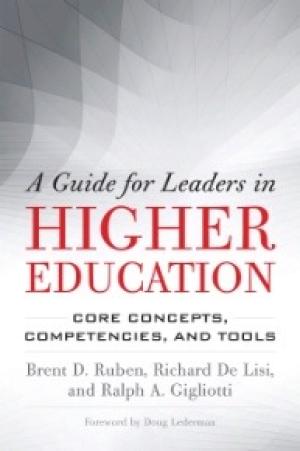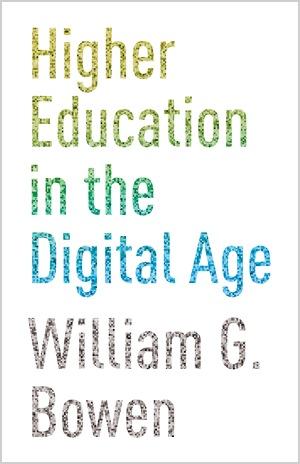Resources

In order to fulfill their missions, institutions sometimes have to change. Leaders guiding communities through such moments or eras need instructional resources, and we do them a disservice when we oversimplify the work of change leadership. “Ten Easy Solutions” do not exist, and suggesting they do causes leaders to feel discouraged, like there must be something wrong with them when they fear, falter, or fail. Change leadership is hard, sometimes even painful, but it is not impossible when approached with appreciation for complexity and a broad repertoire. Dynamic Discernment: Reason, Emotion, and Power in Change Leadership chops through the thicket of change dynamics, opening up three different pathways: • Reason, where change leaders educate their communities and plot out concrete actions; • Emotion, where leaders manage the reactivity that change can incite in a separate-yet-connected style of engagement; and • Power, where leaders take seriously the ways in which grass-roots and top-down forms of authority can find common ground. Sarah Drummond has experienced change leadership firsthand in numerous contexts, and this book uses abundant illustrations and examples, but Dynamic Discernment is best understood as a new and multidisciplinary theory of change. Although aimed at religious leaders, any who serve a mission-driven institution will find resonance. The book provides guidance for (1) recognizing the dominant dynamic at work in a community experiencing change and (2) choosing leadership practices accordingly. (From the Publisher)

This second edition of the informative and influential The Essential Department Chair offers academic chairs and department heads the information they need to excel in their roles. This book is about the "how" of academic administration: for instance, how do you cultivate a potential donor for much-needed departmental resources? How do you persuade your department members to work together more harmoniously? How do you keep the people who report to you motivated and capable of seeing the big picture? Thoroughly revised, updated, and expanded, this classic resource covers a broad spectrum of timely topics and is now truly more than a guide—it's a much-needed desk reference that tells you "everything you need to know to be a department chair." The Essential Department Chair contains information on topics such as essentials of creating a strategic plan, developing and overseeing a budget, key elements of fundraising, preparing for the role of chair, meeting the challenges of mentoring to increase productivity, and creating a more collegial atmosphere. The book also explores the chair's role in the search process, shows how to conduct a successful interview and what to do when it's time to let someone go. And the author includes suggestions for the best practices to adopt when doing an evaluation or assessment. The Essential Department Chair, Second Edition, contains a wealth of new, realistic case studies to equip leaders in this pivotal position to excel in departmental and institutional life. (From the Publisher)

If higher education is to fulfill its vital social mission, new department leaders must be prepared for their positions and get up to speed on the basics quickly, educating themselves about the role and continuing to learn on the job. In this second edition of his classic resource, Don Chu outlines the proven ideas and strategies new department chairs need in order to do their jobs well. Thoroughly revised and updated, The Department Chair Primer contains information that addresses the current pressures and challenges in higher education and offers practical suggestions for responding to them. Filled with illustrative examples, the book gets straight to the heart of challenges and issues. Each chapter details a particular problem, includes a brief introduction to the topic, and provides tips on how to deal with the situation. Covering a wealth of topics, The Department Chair Primer -Explores the chair's role as department leader -Offers suggestions for handling stress and conflict -Includes information on budgeting, resource management, and development -Contains strategies for professional development, people management, and working with challenging personnel -Presents ideas for handling department communications, student development, and strategic positioning Written in a concise and accessible manner, The Department Chair Primer is an ideal resource for the busy new department chair. (From the Publisher)

Brent Ruben, Richard De Lisi, and Ralph Gigliotti, all colleagues at Rutgers University, combine their teaching, research, and work expertise into a volume meant to be a “guide and a resource” (xviii) not only for current but also aspiring leaders, and those in less formal leadership roles on college campuses. Preceded by a pithy foreword by Doug Lederman, editor of Inside Higher Ed, the work is both frank and optimistic, a common characteristic of Brent Ruben, a practiced author in reference works for higher education leaders. The Strengths, Weaknesses, Opportunities, and Threats (SWOT) analysis that constitutes the foreword sets a tone that pervades this book: challenges abound in the current landscape of American higher education, but informed and prepared leaders can respond to these challenges and achieve excellence. The text is divided into four parts. Part One is an overview of issues, opportunities, and challenges faced by institutions and their leaders such as institutional mission (50) and diverse stakeholders (56). Part Two presents theories and literature in response to topics related to leadership like cross-cultural communication (80), and a “comprehensive leadership megamodel” (109). Part Three adds practical tools and applied models to the theoretical discussions of common issues alternating between effectiveness on the part of individual leaders and organizational effectiveness, one example being a tool for organizational review and improvement (181). Part Four, the final chapter, concerns the development of leaders in higher education. The authors’ prescience is on display from the outset of the work when they address the query, whither another book on leadership? Leadership, after all, is one of the more hackneyed subjects in recent decades, no less so in higher education where storied presidents, politicians, journalists, prestigious faculty, and popular commentators have all offered perspectives on the state of higher education and prescriptions for a better way forward. While Ruben, De Lisi, and Gigliotti spend a notable portion of the text describing higher education as they see it, their aim is to provide practical resources to current and future leaders, and in this they were successful. As such a resource, contingent upon the notions of developing competency- and communication-based leadership, A Guide for Leaders in Higher Education succeeds in providing accessible and useful resources to individuals across different leadership roles. While the authors took great care to ground their writing in case studies, hypotheticals, appendices, and applied models, at times it reads more like an introduction to a higher education textbook than an instrumental guide for those currently in leadership positions. As a midpoint between textbook and reference work, it is still successful at both and provides a clear and unbiased background to issues facing current leaders. For religion faculty in discrete or informal roles at their universities, the authors provide a distinctly helpful, perhaps overlong, review of leadership techniques, tools, and competencies. For current department heads and aspiring administrators, the text will assist in becoming conversant in the topics crisscrossing campuses and systems to better respond to today’s challenges.

Former dean of the Harvard Graduate School of Education, Jerome Murphy writes as a seasoned educator about how to best care for yourself as a teacher in the midst of daily stress. This book applies to the stress of academia as well as ministry. It is a book I would recommend to students preparing to teach and to serve in ministerial vocations. Murphy highlights the source of stress that afflicts educators: our own responses to stress. When difficult situations arise, we tend to respond in one of three self-defeating ways: ruminating on the negative, rebuking ourselves, or resisting our emotions. Murphy draws from the literature on mindfulness to point out the health benefits of becoming aware of our emotions in the moment and accepting our shortcomings. As an alternative to the cycles of rumination, rebuke, and resistance, Murphy offers a list of instructions that help educators focus on their own values, summarized by the acronym “MY DANCE.” Each letter represents a phrase discussed in the following chapters. “Minding your values” advocates understanding our own life goals and naming our best version of ourselves. Knowing who we want to be helps us evaluate whether our actions are in line with our values. The next chapter, “Yield to now,” captures the importance of in-the-moment mindfulness, trying to stay present to ourselves and others, and includes exercises for practicing mindfulness. “Disentangle from upsets” also highlights the role of mindfulness in preventing us from being consumed by our stress. The chapter titled “Allow unease” instructs readers to attend to the discomfort of negative feelings. “Nourish yourself” emphasizes intentional self-care and practices of gratitude, while “Cherish self-compassion” takes self-care to a deeper level. The last element of the acronym is “Express Feelings Wisely.” In each of these chapters, Murphy brings in personal anecdotes from years of administration and leading workshops for teachers and school principals. He intersperses these lessons with some of his own personal struggles, such as his wife’s diagnosis with Alzheimer’s disease. In these glimpses of personal sharing, the reader gets a sense of how these practices of self-care have been imperative for someone who has transitioned from being a dean of a Harvard graduate school to a full-time caregiver for his wife of nearly fifty years as she slowly loses her ability to recognize him. This book draws our attention to the humanity of all educators: we are not simply vessels of information or mediums of higher learning. Each person has his or her own struggles in living daily life, on top of the demands of our teaching vocations. Attending lovingly to our limitations and caring for ourselves in the midst of these struggles is crucial if we are to be effective as teachers and healthy individuals. I recommend this book to anyone who wants to learn how to better care for themselves in the midst of life’s demands.

Northouse and Lee adopt the definition of leadership put forth by Northouse in his influential textbook Leadership Theory and Practice: “Leadership is a process whereby an individual influences a group of individuals to achieve a common goal” (2). The co-authors state that the common goal of educators is “to create a safe place where students can effectively learn and grow” and so it follows that leadership – the process of influence – is central to the educators’ vocation (2). During the past one hundred and fifty years, researchers have offered multiple approaches to understand precisely how leadership works, and Lee and Northouse succinctly summarize various approaches and provide case studies based on actual situations in education to help readers to apply the theoretical concepts. Following their introduction, each of the remaining fifteen chapters in Leadership Case Studies in Education presents one theory for understanding leadership along with two case studies, one focused on K-12 and one in higher education. The first half of the book generally parallels developments in leadership research in the twentieth and twenty-first centuries, beginning with theories that hone in on the leader’s characteristics or actions (trait, skills, and behavior) and moving to theories that explain group processes (situational, path-goal, and leader-member exchange). Chapters eight through ten examine more recent descriptions of th e qualities of a leader presenting transformational, authentic, and service leadership theories. These are followed by chapters on adaptive leadership, psychodynamic approach to understanding leadership, ethics, and team leadership. The book concludes with case studies that highlight the significance of gender and culture. The sixteen higher education case studies cover a range of leadership positions. Three of the case studies feature a university president; six present situations faced by administrators or staff working outside of academic affairs; one is about a student leader; and six focus on faculty. A set of six questions concludes each case study. The first three directly address the case study, while the second set connects the case study to Northouse’s text. Northouse and Lee wrote Leadership Case Studies in Education as a companion text to Northouse’s Leadership Theory and Practice. The case study text offers compact summaries of each leadership theory, which are intended to serve primarily as review of the more thorough presentation and assessment in the main text. For example, in Theory and Practice, Northouse devotes thirteen pages to leader-member exchange theory, describing early and later studies, explaining how the theory works, presenting its strengths and limitations, and suggesting possible application. Case Studies condenses this to less than three pages. Northouse and Lee write that their intended audience is “undergraduate and graduate classes in education and educational leadership,” (ix) so it is not surprising that its usefulness to this audience may be limited. The case studies draw on real-life situations but are missing discussion and analysis. This may be a useful companion textbook for classes in educational leadership, but without the corresponding textbook Leadership Case Studies in Education misses an opportunity to influence readers outside the classroom in the common goal of improving education.

National and global cultural constructs are changing faster than ever, oftentimes faster than those who educate can keep apace of. The challenge presented in this volume is clearly stated in Haynes’s introduction: Education leaders “must accept responsibility for accessing and mobilizing all available resources to support students’ total development and for demonstrating that they are making a significant and measurable positive difference in turning present educational trends around” (viii). A popular mantra of leadership theory as first proposed by James McGregor Burns, John Maxwell, and Max De Pree, and later repopularized by Jim Collins, Malcolm Gladwell, Chip and Dan Heath, and Michael Hyatt, is that leaders are responsible for creating organizational culture. Therefore it is imperative that educators, both those who are currently in leadership positions (discipline chairs, principals, superintendents, school board representatives, and so forth) and those who aspire to leadership positions, take seriously this challenge of creating a culture for effective learning by demonstrating that they are effective leaders and worthy of being followed. Following the challenge-laden Introduction, the volume is divided into three sections, with each section focusing on a different aspect of educational leader development. Each section opens with a short introduction from one of the editors. The first section (chapters 1 to 4) focuses on “core knowledge” elements for teachers and educational leaders, such as public policy (chapter 1), Knowles’ theory of self-directed andragogy (chapter 2), Goleman’s theory of emotional intelligence (chapter 3), and education as social justice (chapter 4). The second section (chapters 5 to 9) focuses on professional development for educational leaders, such as developing an ecological framework for the educational setting (chapter 5), leading educational reform (chapter 6 and 8), developing a global perspective on education (chapter 7), and seeking continuing education once on the field (chapter 9). The final section (chapters 10 to 14) suggests strategies for improving the learning experience, such as utilizing applied research (chapter 10) and program evaluation (chapter 11), developing a multicultural approach to learning (chapter 12), and implementing balanced curriculum (chapter 13) and technology (chapter 14) into the teaching model. This volume would be most applicable to a course in educational leadership development. It certainly draws from the wealth of the experience provided by the contributors. It is most appropriate for elementary and secondary educators and educational leaders (and those who instruct in that field). However it does have value for those who teach in other disciplines at the undergraduate or graduate level. I found the chapters on policy and balanced curriculum to be most helpful. There are a couple of concerns that should be noted: First, while it is subtle, there is a tinge of socialist rhetoric used throughout the volume. It is most prominent in chapter 4 where the co-authors equate social justice with socialist reform. Second, there is a sense of almost blind acceptance, despite the growing amount of evidence-based literature to the contrary, of Common Core standards throughout the book. Both of these concerns go hand-in-hand and should be considered by the prospective reader.

What is the unique value of higher education? What is effective instruction? Is there a cost crisis that is threatening the value and efficacy of higher education? Can technology offer a solution? These are a few of the questions posed by William Bowen and others in Higher Education in the Digital Age. This readable and thought-provoking book consists largely of lectures delivered by Bowen at Stanford University in 2012. The discussion of these issues is expanded to include other voices of leadership in higher education, all of whom contribute responses to Bowen’s original lectures. Bowen addresses the pressures facing university administrators who must balance all aspects of post-secondary education: cost to students, quality of education, financial support of research, and costs of personnel. The first two of three sections are lectures Bowen delivered at Stanford. The first lecture describes the economic issues facing institutions of higher education, including problems of affordability and the lack of productivity-increases in higher education compared to other industries. The second lecture implores leaders in higher education to address the dual issues of rising tuition and rising expenditures and to, at the very least, try to slow the rates of increase. His possible solutions look to technology (online or hybrid instruction) to increase productivity. In so doing, he opens up a larger discussion on what qualifies as actual learning and what costs (to quality of education and to funding for development and implementation) are acceptable. The discussion among higher education leaders and administrators in the third section of the book is its greatest value. The discussion hits on many of the economic and societal issues Bowen brings up: the flattening of family incomes, rising tuition rates, issues of completion rates, the pros and cons of MOOCs (Massive Open Online Courses), and issues raised by the existence of for-profit degree-granting institutions. All of the authors come from top tier research institutions: Harvard, Stanford, Columbia, and Princeton. One wonders how different the conversation would be if more publicly-funded universities, smaller liberal arts colleges, or community colleges participated in the discussion. While some of the writers acknowledge this bias and seek to qualify it by examining data from other types of institutions, their solutions (that require a large amount of funding) seem removed from the reality at other institutions. In spite of this limitation, the authors of Higher Education ask questions that invite reflection and conversation, given the financial situation in which many institutions find themselves. What value do we offer our students? Will the drive to increase productivity take that value away? Does technology offer opportunities to improve education while also increasing productivity? Can online learning maintain what is most valuable in a liberal arts education? The solutions offered are not a total fix (by the authors’ own admission), but the dialogue initiated in Higher Education presents administrators, faculty, and staff with an opportunity to rethink and innovate traditional teaching methods.

Women involved or interested in leadership in higher education will find this book to be at turns inspiring and somewhat painful to read. Any woman who has held a position of leadership likely shares similar stories of personal sacrifice and institutional prejudice; indeed, many of the stories in this book paint a picture of academia as hostile, male territory. Tanya Fitzgerald manages to add a twist to this tale in the way she weaves together stories from her ethnographic research with senior women leaders in universities in Australia and New Zealand. Her work focuses primarily on the trials and triumphs of women as they extend themselves mentally, emotionally, and physically in their jobs, but the book manages to offer a sense of hope in part because the author chooses to frame her analysis around the experiences of Indigenous women. This inclusion and focus gives the book leverage in a field flooded with similar studies. Fitzgerald uses the experiences of these women to show that women’s encounters with academic institutions are best described as “continuous struggle and compromise” (25) that nevertheless opens the way for new ways of conceiving of leadership in higher education. Fitzgerald teases out the complexities of the tasks facing women who oversee diverse staff, who are expected to “think big” while handling minutia, and who serve as mentors for women wanting to break into the leadership roles. Women’s lives as academic leaders is, in one word, “messy.” Fitzgerald is also appropriately attentive to disciplinary context and institutional climate, and her subjects come across as real individuals in real circumstances. Her overall goal is to push up against the myths that keep women as institutional housekeepers or otherwise limit their potential as leaders (22) and she manages to do that, albeit in a limited and incomplete way that fits with the stories she includes. She is careful not to advance any “grand narrative,” preferring instead to celebrate the individuality of her subjects as they improvise their lives. The myths being shattered here include the myth of opportunity (which assumes that gender equality is established) and the myth of what leadership ought to look like and how women ought to behave (17). Overall, Fitzgerald paints a picture of academia as a land alien to women and women’s ways of being, so that women who find themselves in position to lead often have to adjust to the rules or courageously make up new rules. Fitzgerald highlights the precarious positions held by women in leadership roles, and she ends on a point of hope that seems a bit of a stretch based on her evidence. Nevertheless, I would recommend this study to any woman (or man) in leadership, either in higher education or the clergy. Although Women Leaders in Higher Education does not focus much on teaching, many women in higher education will find themselves faced with the question of whether to move into administration. This book will shed light on that personal and professional choice.

The authors chose a catchy title, but it is difficult to find the “tools” for a dean’s toolkit in the book. The book This work consists of common sense advice with scenarios and short case studies that illustrate situations, dilemmas, and challenges commonly faced by deans in seven key areas, which make up the chapter divisions: managing self, leading peers, leading and managing supervisees, leading faculty, leading departments, managing students (and their parents), and managing up. The common sense advice may be helpful to novice deans lacking administrative experience, but will be of little value to seasoned deans, associate deans, and department chairs. For example, the first chapter, on “managing ourselves,” consists of simple, generalized, pragmatic advice on: office management (“You will need to make decisions on what you will delegate, which tasks and responsibilities belong to whom, and when associate deans or senior staff may represent you” [4]); scheduling (“Your staff must also understand that because of the responsibility of the dean’s position, you may be out of the office frequently” [4]); wardrobe (“An appropriate office appearance and staff wardrobe signals respect for the dean’s office and its functions” [4]); and how to handle phone calls, visitors, mail, and filing. In the scenarios and case studies the authors do well in presenting present difficult situations faced by deans. The examples range from relatively mild procedural and administrative issues to dysfunctional personal and contextual (cultural and systemic) issues. For novice deans, or those considering this job, these will provide a sobering reality check to any romantic notions. However, there is no central or systematic framework that can help a dean discern how to approach the challenges of the office. In other words, there is no discernable theory of practice for the work of the dean, aside from a strong advocacy for collaborative (“shared”) leadership, a concept for which the authors rely on Pearce and Conger’s Shared Leadership: Reframing the Hows and Whys of Leadership (Thousand Oaks, CA: Sage Publications, 2002). It is uncertain whether one consistent thread in the scenarios and case studies is a product of the scope of the authors’ experience, that of the subjects of their studies, or a reflection on the culture of higher education. That thread is the manner in which solutions for many of the difficult scenarios and cases are found. Many, if not most, of the difficulties are resolved by transferring under-functioning or acting-out faculty and staff to other departments, accommodating underperformers by offering incentives (reduced teaching loads, early retirement options), wishfully waiting out a troubling situation, triangulating provosts and department chairs, or allowing agency to the willful or weak in the system (an invasive human resource department, persons unable to do their work, and so forth). The authors are correct that “In the academic environment, deans provide the delicate but crucial backbone of university decision making” (66), but that requires the practice of courage in leadership in greater measure than most of the scenarios illustrate.